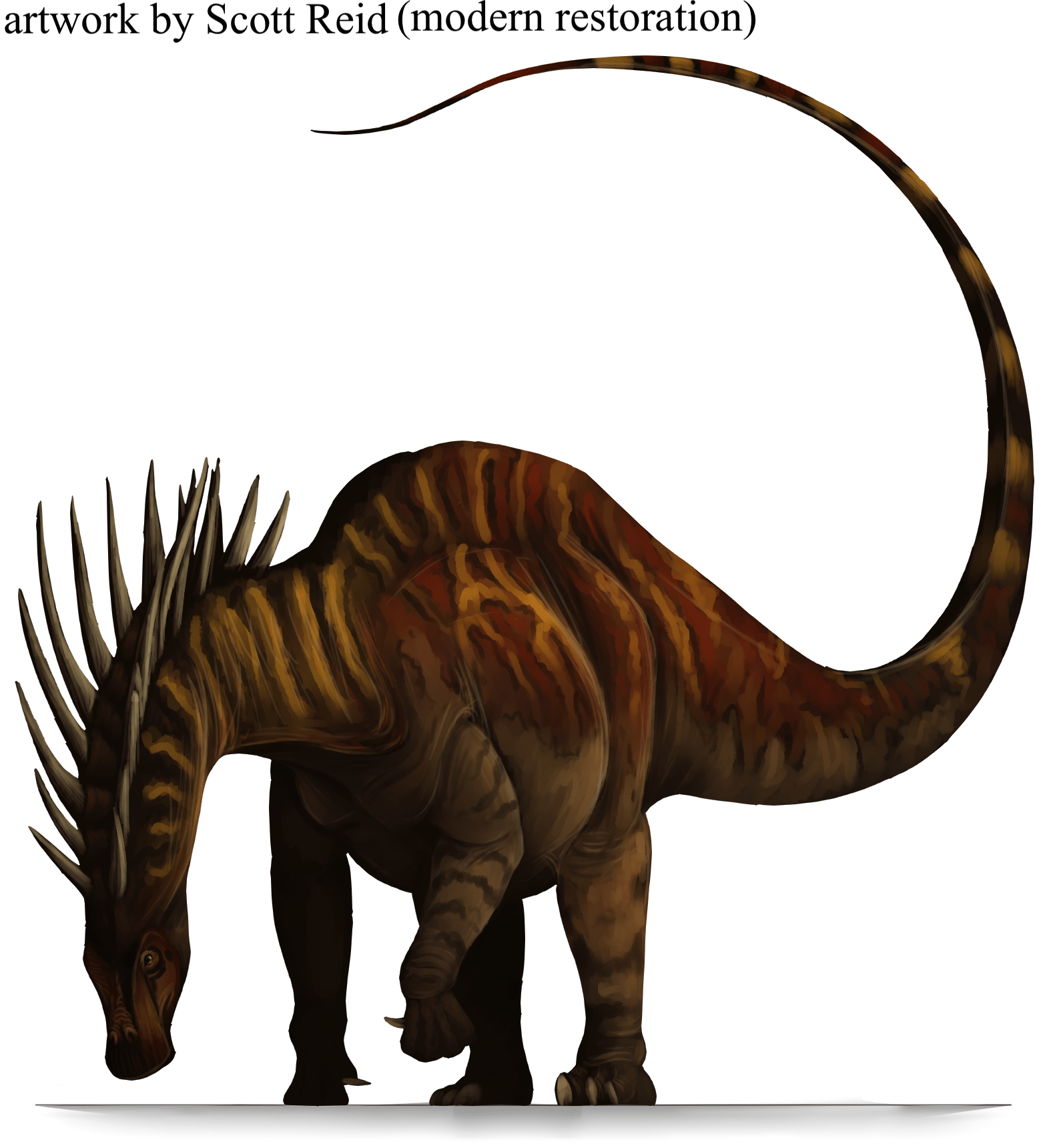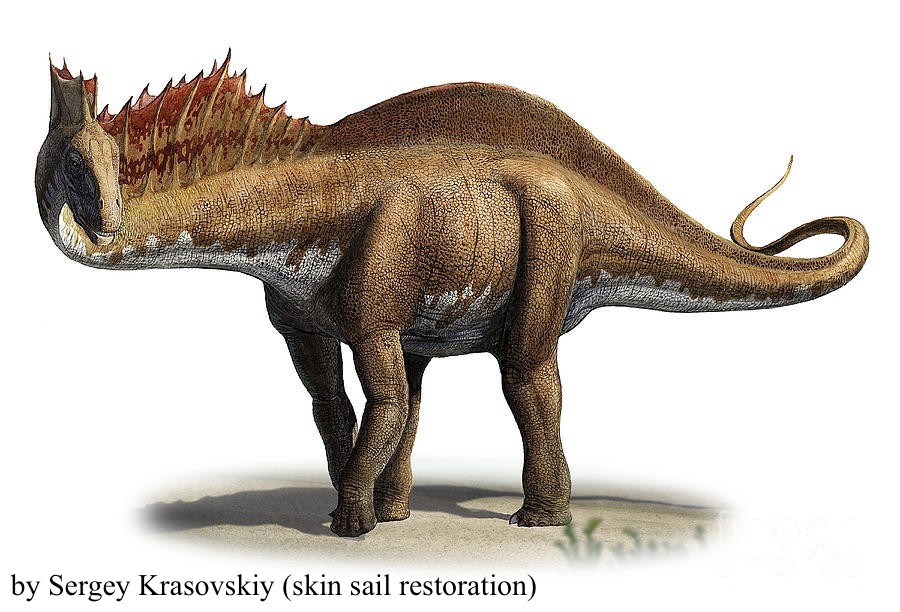Welcome to Amargasaurus

Name Definition
La Amarga Formation (named after the La Amarga Arroyo where it was discovered)
Name Given By
Leonardo Salgado and José Bonaparte in 1991
Location
La Amarga Formation in Argentina, South America
Classification
Dinosauria, Saurischia, Sauropodomorpha, Sauropoda, Diplodocoidea, Dicraeosauridae
Size
approximately 2-3 meters tall (6.5 - 9.8 ft), around 9 - 10 meters long (29 - 32 ft), approximately 2.6 - 3 tons
Temporal Range
Barremian - Aptian stages of the Early Cretaceous, ~129.4 - 122.46 million years ago
Ecological niche
mid-sized herbivore
Species/Sub Species
A. cazaui
Diet
Amargasaurus probably only fed on low lying plants and trees of up to 2.7 meters in height since diplodocoids had more horizontal necks not permitting as much height as other sauropods
Introduction
Amargasaurus is a genus of dicraeosaurid sauropod dinosaurs that lived in Argentina during the Early Cretaceous. Contrary to popular belief, Amargasaurus was actually named after the type locality of the La Amarga Formation, the La Amarga Arroyo. The specific name “cazaui” honors Luis Cazau, a geologist working with the YPF oil company in Argentina. Cazau reported the paleontological significance of the La Amarga Formation to Bonaparte’s team which led to the discovery of Amargasaurus. The only known holotype specimen, discovered in 1984, is virtually complete with a partial skull.
While it isn’t so famous in pop culture, dinosaur lovers are sure to easily recognize this bizarre sauropod with bifurcated neural spines running down its neck. There are two theories as to how these spines would have looked like in real life. The first one is that there was a “skin sail” surrounding the neural spines, making it look like Spinosaurus’s sail but with spines sticking out of it. The second theory suggests that Amargasaurus did not have any skin sail and only the spines projecting from its neck. This theory is based on the fact that the sail would make the neck too rigid to bend, though this would depend as to how much Amargasaurus would need to bend its neck for eating and drinking. There are also a couple of theories as to what the spines were used for. One theory interprets these spines as a defense mechanism against predators like Carnotaurus where the spines on Amargasaurus’s neck would gradually decrease in width further up until it was pointy, and it could have impaled predators, though this is quite unlikely since if these spikes were defensive weapons, you would expect them to cover the back of Amargasaurus’s body. Another theory suggests that the theorized skin sails would have helped in thermoregulation possibly like in Spinosaurus or Ouranosaurus, however, again, this is unlikely since a thermoregulation device on sauropods has never been observed, and this also ties in with how the skin sail would have reduced neck flexibility. Possibly one of the most likely theories is that male Amargasaurus individuals used their spines for visual display and courtship during mating, with males that have larger spines being more mature and ready to mate. Since males had to mount females in order to transfer their sperm, spines would most likely not be present on their backs so that the males would not receive any injuries from the spines. Additionally, male Amargasaurus individuals maybe would have also shook their necks to create clacking sounds from their neural spines for auditory display. Older individuals would have also used this display to show their seniority to younger males. These spines would have also been useful for species recognition.
Due to the overall horizontal position of Amargasaurus, it has been classified as a diplodocoid sauropod since most diplodocoids and diplodocids have a horizontal position, and resides within the Dicraeosauridae family, so it is closely related to sauropods like Dicraeosaurus and Brachytrachelopan. Amargasaurus was the first dicraeosaurid discovered from the Cretaceous, though since then there have been several more including Pilmatueia, Amargatitanis, and Bajadasaurus, all of which are also from Argentina too. This is a good example of a different lineage (since most Cretaceous sauropods were titanosaurs) of sauropods that survived through the Jurassic-Cretaceous extinction and into the Cretaceous, since most diplodocoids from the Jurassic such as Apatosaurus and Diplodocus went extinct after the Jurassic, and the dicraeosaurids were some of the only surviving diplodocoids left in the Cretaceous.
